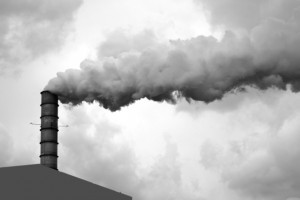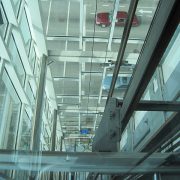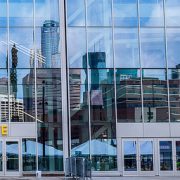Art glass factories facing EPA regulation
More than a dozen art glass factories around the United States are coming under increased scrutiny from the Environmental Protection Agency, state and local regulators, after apparently running afoul of heavy-metal emission regulations earlier this year. Federal researchers with the United States Forestry Service discovered dangerously high levels of heavy metals in tree moss samples in the Portland, OR area. Additional investigation pinpointed the source of the heavy metals as the art glass factories in the area.
Glass makers not exempt from heavy metals emissions
Spectrum, of Woodinville, WA, has already announced that it will close its doors instead of attempting to comply with more restrictive emission regulations. Bullseye Glass in Portland is attempting to remain open, despite regulatory pressure and a production moratorium that has been imposed on the factory by the State of Oregon. A third Portland-based manufacturer, Uroboros, which has partnered with Spectrum on certain products, also says it will continue to manufacture and produce colored glass and glass colorants. The EPA is particularly concerned that the factories have been emitting vaporized cadmium into the air after the agency discovered that none of Portland’s glass factories had the requisite pollution control systems installed on their glass-melt furnaces.
The factories make agents used by glassmakers to produce colored glass. Additives, including lead, nickel, arsenic, cadmium and chromium, have become the subject of concern for regulators, and have been measured in significantly elevated levels in the soils around the factories. The EPA is also questioning state regulators and their interpretations of federal regulations, as well as their enforcement practices.
Initially, the factories thought they were exempt from more stringent regulations, but pressure on the state’s Department of Environmental Quality by the EPA and local residents has brought about a new understanding of federal emissions requirements. In addition, the EPA is reviewing emissions data from about 15 other art glass factories around the country that use similar production practices.
About half of the factories that are the subject of enhanced EPA scrutiny are located in the Midwest and on the East Coast. The remainder are clustered in Oregon and Washington State. The EPA has not yet concluded its investigation of the factories, but many glassmakers point out that their production processes do not violate federal laws.
Glassprimer™ glass paint provides an excellent alternative to colored glass. Glassprimer™ glass paint comes in a wide range of colors and creates a permanent bond with the glass surface. In addition, Glassprimer™ glass paint comes in both oil-based and water-based formulations. Our water-based formulation cleans up with water, and both formulations are low-odor, low-VOC compounds.
If you’d like more information about working with Glassprimer™ glass paint, please check out the rest of our site. If you’d like to purchase Glassprimer™ glass paint, please visit our online store .
Photo Credit: Kenn Kiser , via FreeImages.com




